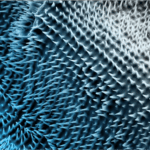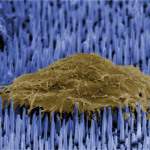A nanoneedle bandage for topical intracellular COL7A1 gene therapy to accelerate wound healing in Recessive Dystrophic Epidermolysis Bullosa
Lay summary
This project develops a new approach to improve and speed up the healing of skin wounds in patients with Recessive Dystrophic Epidermolysis Bullosa (RDEB). The aim is to use a bandage decorated with nanoscale (tiny) needles as a dressing for the wounded skin area, in order to inject the functional version of the Collagen VII gene (COL7A1) directly inside the cells in the wound, while maintaining the skin protection.
Because the nanoneedles inject COL7A1 directly inside cells, instead of being delivered through the circulation or applied on top of the skin, the gene is safe from being inactivated by the mechanisms present in the body that fight the invasion by foreign entities (e.g. immune system, enzymes that degrade nucleic acids). In this way, the direct injection into the cells can produce more functioning Collagen VII for a longer time, while using less COL7A1, making the wound healing treatment more efficient, more affordable, less invasive, and less frequent.
In prior work, the nanoneedles have already successfully delivered COL7A1 to cells from patients with RDEB. This project is developing a strategy to place the nanoneedles on a flexible bandage and test whether this bandage is safe and effective in an animal model, preparing the way for clinical trials.







